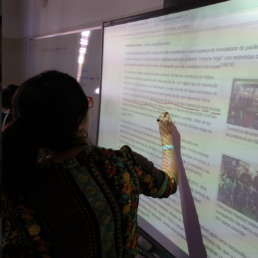Vrindavan widows who're lured into indentureship
- History
- Culture
- Music
For the fifth feature on Women’s History Month, we take a look back at the widows of Vrindavan who were lured into indentureship by the empire.
At the start of the 16th century, Saint Chaitanya inspired a branch of Hinduism that departed from the many rigid norms which plagued it; in doing so he made Vrindavan, the spiritual capital of his new way of life.
Few centuries later, Vrindavan, the eternal playground of Lord Krishna, became a home for the fallen women. Women who were discarded by society were either slated to die as a Sati or were left to be devoured by other forms of patriarchy.
For these fallen women, widows mostly who were seen as a burden on their families, Vrindavan became their abode. They took up Vaishnavism, the proposed way of Saint Chaitanya, and started devoting their lives to the Lord.
However, all was not well in the holy city. In the garb of liberation widows had to face harsh living conditions, poverty; and many even fell prey to sexual exploitation.
When the British Empire took over, they needed labourers to work on their plantations in various parts of the world. Vrindavan interestingly became a hotbed for recruiting women coolies for the empire.
Mainpuri, a district on the way to Vrindavan was prolific in supplying women coolies to the empire. Many women who found their way to Mainpuri en route to the holy city were coaxed into indentureship and found themselves on sugarcane fields halfway across the world.
Many widows went willingly. A new lease of life in a far-off land purportedly away from exploitation seemed an attractive proposition, even if it meant crossing the Kala Pani.
From the perspective of the Empire, they saw it as a way of civilizing a culture. Providing a helping hand to a very marginalized and victimized section of the society.
It was not the first time they had done it, banning Sati and Child marriage were on the face of it good measures though it is hard to guess, what the widows thought of the British rhetoric at that time.
Between 1842 and 1870 a total of 525,482 Indians were taken as indentured laborers to the British and French Colonies. Of these, 351,401 went to Mauritius, 76,691 went to Demerara (part of Guyana), 42,519 went to Trinidad.
These are some rough estimates and it is believed many among the traveling may have been widows seeking another chance at life and whose stories like many others have been lost in the passage of time.
Source
Coolie Woman: The Odyssey of Indenture by Gauitra Bahadur







